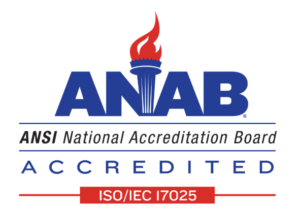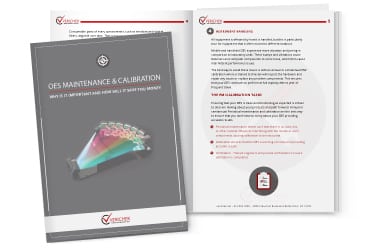Elemental analysis has been around since the early 19th century when Louis Jacques Thenard and Joseph Louis Gay-Lussac conducted research on electrochemical analysis. It has evolved steadily over time, but has dramatically progressed over the last two decades.
One of the most common types of elemental analysis today is the optical emission spectroscopy (OES). This method uses an optical emissions spectrometer to determine the purity and composition of the metallic elements in solid alloy samples. A spectrometer accurately measures the metals and alloys in a substance so that quality control and customer specifications may be met.
Elemental Analysis
Elemental analysis is conducted on a sample (whether a metal sample or something else) and determines the types and proportions of its composition. Elemental analysis can be conducted on anything, and is considered a subset of analytical chemistry. The analysis can be used to both determine the elements and isotopes of a sample.
This analysis is usually subdivided into two types: qualitative and quantitative.
- A qualitative analysis is used to determine the elements present within a certain sample.
- A quantitative analysis is used to determine the atomic or weight percentage for each element present in the sample.
Elemental analysis has evolved over the centuries. One of the most successful methods is the X-ray fluorescence (XRF) technique, which was discovered nearly two decades ago.
- The XRF technique creates a main X-ray beam to excite fluorescent radiation from a sample.
- The XRF spectrometer ionizes of the atoms, which then release photons.
- As the sample emits radiation from the X-ray beam, the technician uses a spectrum to determine the composition of the sample.
This re-emission of energy is usually different in the sense that it is lower than one of the currently most popular methods, OES. It also uses radiation as a method of determining the sample’s composition, which can be a deterrent from using the XRF technique.
How an OES Applies Elemental Analysis
As the name suggests the results of an OES test rely on optical aspects of the sample, so the tools used for this particularly type of analysis uses x-rays, ultraviolet, and infrared and is a non-destructive method of positive metal identification.
The way a sample reacts provides the basis for the results, which are based on known information of the different compounds and elements.
- An optical emissions spectrometer applies electrical energy to analyze the alloy or metal.
- An electrode generates sparks or initiates an emission (such as fluorescence radiation) from the sample, and the reactions of the sample are then analyzed by the spectroscopy.
- The sparks or emissions result in vaporized atoms in a high energy state within the discharge plasma.
- Once the vaporized atoms reach the discharged plasma, it creates a particular emission spectrum to be analyzed.
- Since the emission spectrum is specific to each element, the spectrometer uses the spectrum to determine the composition of the sample.
- A trained technician uses the spectrum to determine the sample composition based on where in the spectrum the results fall.
OES probes the outer electronic structure of the atoms within the sample. It provides fast identification and detection of the content in metal and alloy samples, regardless of how much or how little of the component is contained within the sample.
Because quality control is vital when working with steel alloys, OES parsed samples tends to focus on the most common metal elements, such as chromium, nickel, molybdenum, copper, and iron. However, with more than eighty metallic and metalloid elements in the periodic table, OES can be used to determine a much wider range of potential alloy elements. For example, the purity of steel alloys and sample composition can vary by factors such as one of the elements being magnetic.
Elemental analysis and OES are complex. For further details on these kinds of analysis, contact us, and we can provide you with more information and answer whatever questions you may have.



 OES MAINTENANCE & CALIBRATION:
OES MAINTENANCE & CALIBRATION: